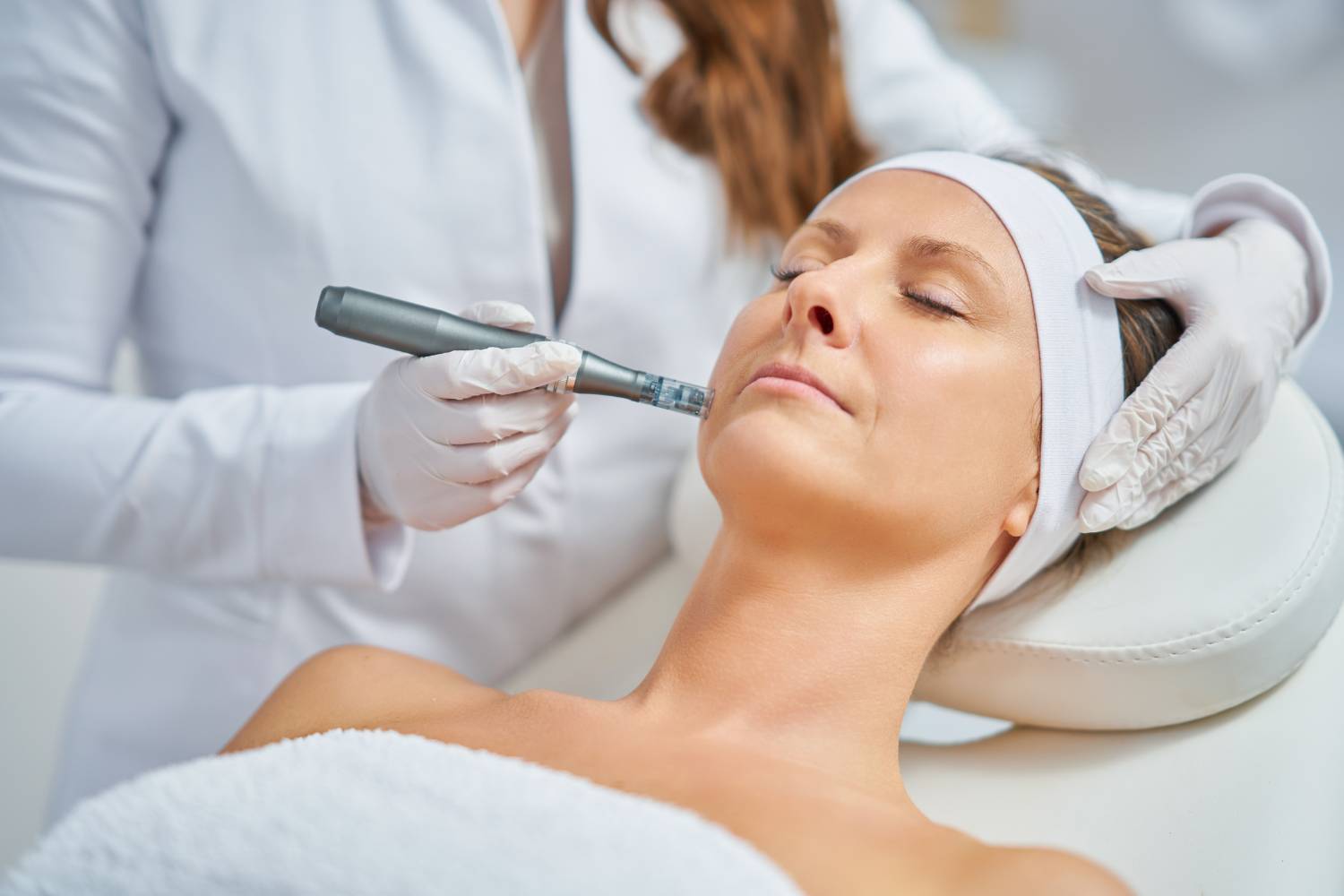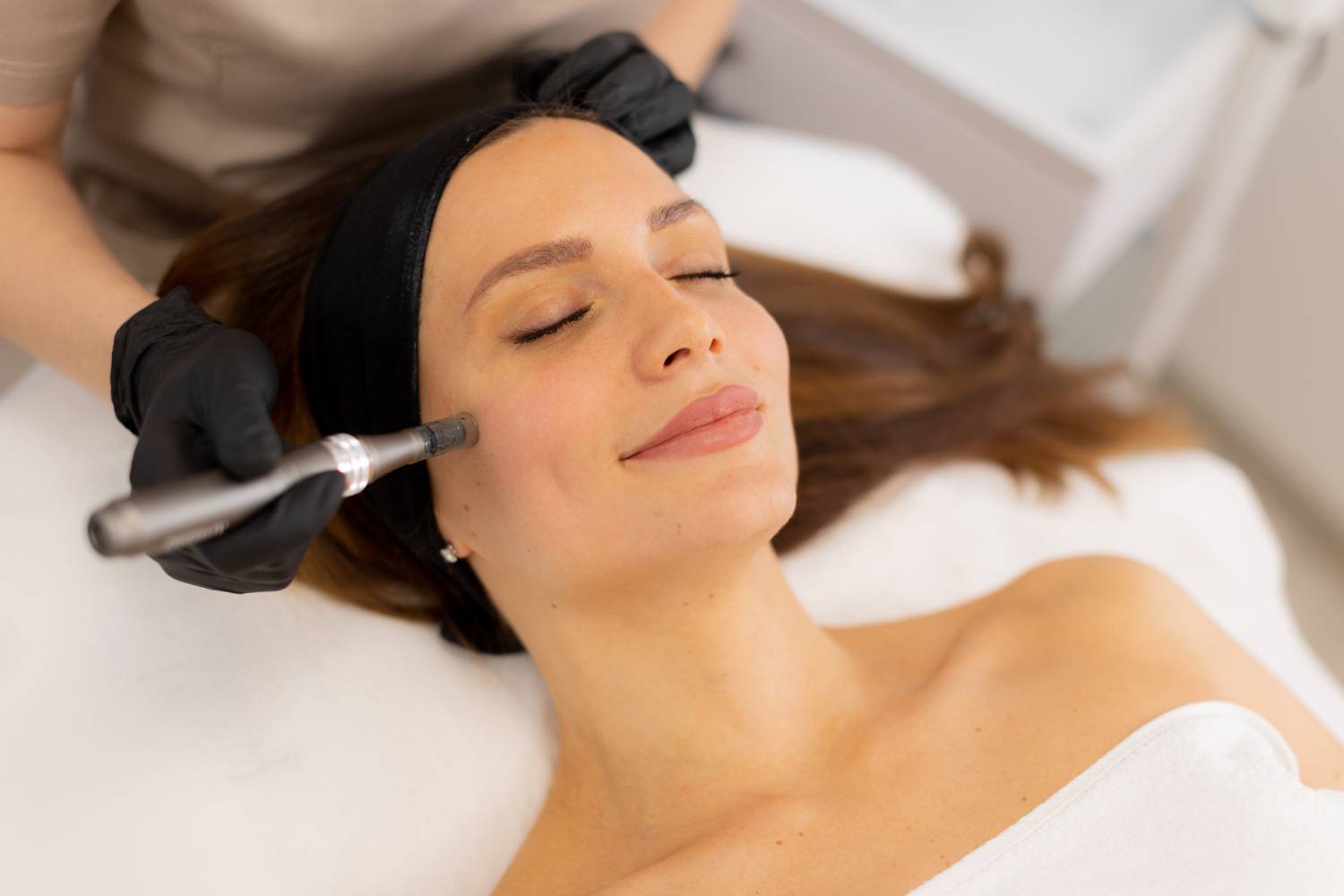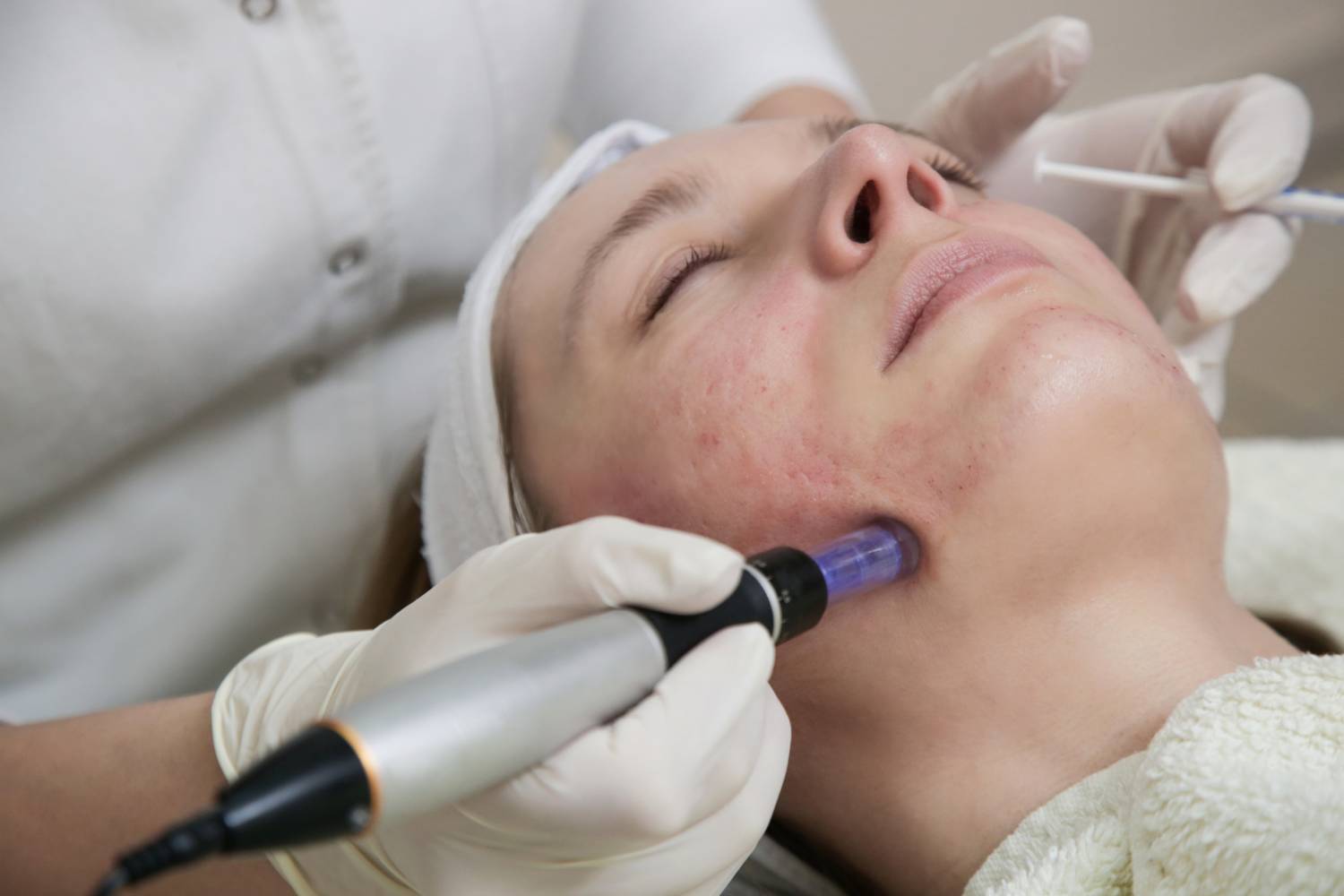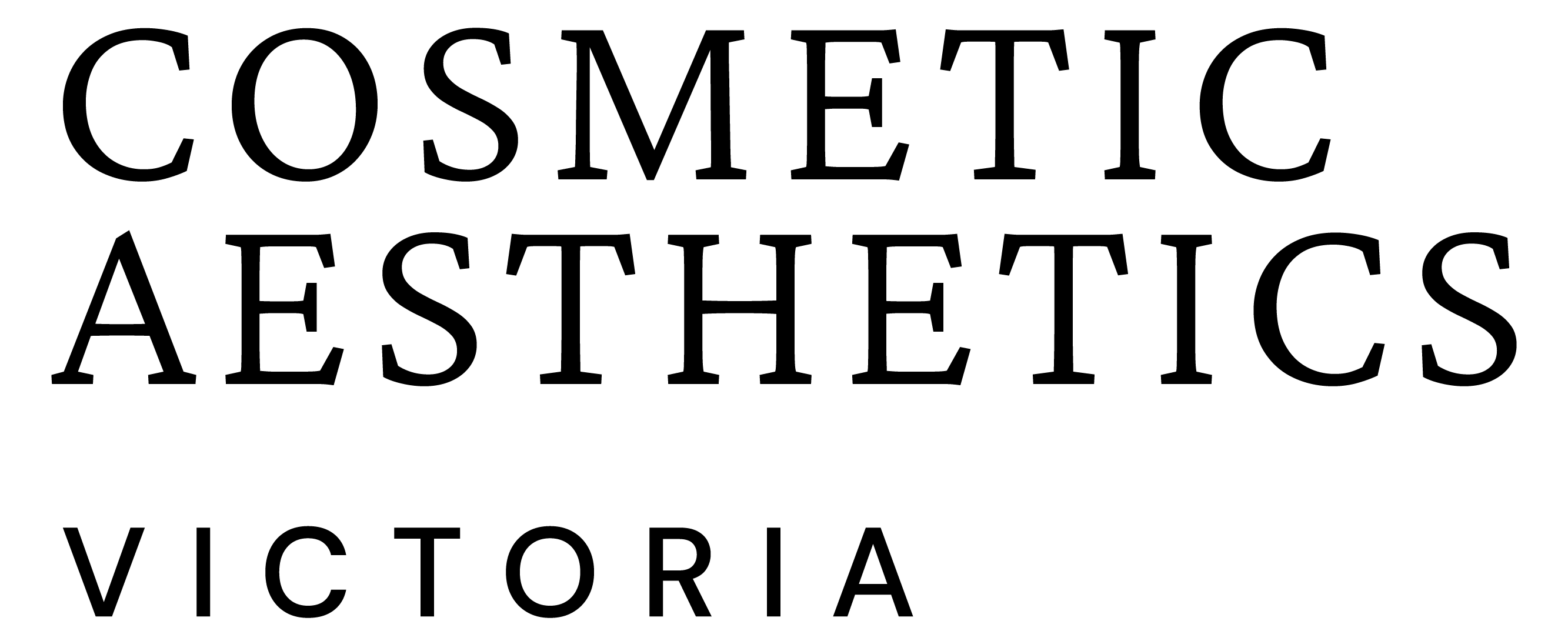
Why Skin Needling Is Your Ultimate Solution For Collagen Boosting And Scar Reduction?
Have you ever looked in the mirror and wished your skin were smoother, more radiant, or free from the scars of the past? I get it — I’ve been there, and so have countless clients who have walked through the doors of Cosmetic Aesthetics Victoria. From acne scars to fine lines, we all have something we’d love to improve about our skin. But what if I told you that one treatment could address many of these concerns, naturally and without the need for surgery?
Enter microneedling, or collagen induction therapy. Over the years, I’ve witnessed firsthand the incredible transformations that skin needling can offer. It’s not just about smoother skin — it’s about restoring your confidence, boosting your skin’s natural glow, and helping you feel more like yourself again. Whether you’re struggling with scars, wrinkles, or simply want to refresh your skin, this treatment has proven to be a game-changer.
In this blog, we’ll dive into the power of skin needling for collagen boosting and scar reduction, and I’ll share with you the science behind the treatment, real client experiences, and why it might be just the solution your skin needs.
Microneedling: A Revolutionary Skin Treatment For Collagen Production
How Skin Needling Stimulates Collagen Production?
If you’ve ever wondered how to rejuvenate your skin without undergoing surgery, skin needling might just be the answer you’re looking for. As someone who has witnessed the remarkable transformation in many clients’ skin health over the years, I can confidently say that microneedling is one of the most effective treatments for boosting collagen production and giving your skin a fresh, youthful appearance.
Microneedling, also known as collagen induction therapy (CIT), is a minimally invasive procedure that works by creating tiny, controlled injuries in the skin. These micro-punctures stimulate the body’s natural healing response, triggering the production of new collagen and elastin — two key components that help keep the skin firm and elastic. Think of it as sending a signal to your skin to “wake up” and regenerate!
From my experience, the results can be truly transformative. After just a few sessions, many clients report smoother, more even-toned skin, and they often notice that their skin feels firmer and plumper. But it’s not just about improving the surface of the skin — the real magic happens deeper within, where collagen is being rebuilt, and skin texture is restored.
To break it down, here’s how it works in three phases:
- The Inflammation Phase
After the tiny needles puncture the skin, your body reacts by increasing blood flow to the affected areas, sending white blood cells and growth factors to “clean up” the micro-wounds. This phase typically lasts for a couple of hours to a day and can cause some redness or mild swelling, much like a light sunburn.
- The Proliferation Phase
This is when the fun starts — your body begins the process of neocollagenesis, or the creation of new collagen. Growth factors such as TGF-β (transforming growth factor-beta) and FGF (fibroblast growth factor) help trigger the formation of new skin cells, resulting in smoother, firmer skin. This phase can last a few weeks, and it’s where we start to see the real improvement in skin texture.
- The Remodelling Phase
The final phase is where the collagen matures into the stronger and more durable Type I collagen, which is responsible for skin firmness and resilience. Over the next few months, you’ll notice your skin becoming more lifted, smoother, and more radiant.
It’s often said that “good things take time,” and when it comes to skin needling, that holds true. While some visible improvements can be noticed after just one treatment, a series of 3–6 sessions spaced about 4 weeks apart typically delivers the best long-term results. If you’re in Melbourne or Sydney, where the climate can be dry and harsh at times, this treatment is particularly effective in boosting hydration levels and restoring a healthy glow to sun-damaged skin.
What To Expect From Your Microneedling Treatment: Recovery And Results Timeline
Microneedling Recovery: What To Expect In The Days After Your Treatment
After your microneedling treatment, the recovery process is typically quick and relatively easy. I’ve had many clients tell me that, compared to other procedures they’ve tried, microneedling’s recovery time is surprisingly short. That said, there are a few things you’ll experience in the first few days post-treatment that are totally normal—and even expected.
| Day | What to Expect | Skin Appearance | Recommended Care |
| Day 1-2 | Redness (like a mild sunburn), possible swelling or tightness | Red, inflamed, slightly swollen | Use a gentle cleanser, hydrating serum, and moisturiser. Avoid the sun and makeup. |
| Day 3-4 | Mild flaking or dryness as old skin cells shed | Slight peeling or dry patches | Do not pick or scrub. Continue hydration and avoid exfoliants. |
| Day 5-7 | Redness fades; glow and smoother texture start to appear | Brightened, refreshed, smoother skin | Resume normal skincare (except actives); use sunscreen diligently. |
During these first few days, the most important things to remember are to avoid direct sun exposure and use a broad-spectrum sunscreen (SPF 30 or higher) daily to protect your skin as it heals. Also, avoid using any harsh skincare products, such as exfoliants, retinoids, or acids, for at least a week to prevent irritation.

Realistic Microneedling Results: When Will You See A Difference?
While some people notice a glow almost immediately after their microneedling treatment, the most significant results will unfold over the following weeks and months. The process of collagen production and skin regeneration takes time, so patience is key.
Most people begin to see noticeable improvements in skin texture and tone about three weeks post-treatment. Fine lines start to appear softer, skin feels firmer, and scars—particularly shallow ones—begin to fade. However, the full benefits of microneedling typically take 6-8 weeks to become fully visible. This is when the real magic happens as the skin continues to produce collagen and elastin, improving skin health from the inside out.
For scars, whether it’s acne scarring or surgical scars, multiple treatments are often required to see more dramatic improvements. Typically, clients undergo between 3 and 6 microneedling sessions, spaced approximately 4 to 6 weeks apart. It’s this consistency that yields the best long-term results.
Clients often report feeling more confident after a series of treatments, noticing that their skin texture is smoother, scars are less visible, and their overall complexion has a youthful, healthy appearance.
How Microneedling Treats Different Types Of Scars?
When it comes to scar reduction, microneedling is a game-changer. Over the years, I’ve had the privilege of helping countless clients deal with the physical and emotional impact of scars. Whether it’s acne scars, surgical scars, or even burn marks, microneedling has consistently proven to be one of the most effective, non-surgical treatments for improving the appearance of scars.
What makes microneedling so effective for scar treatment? It works by physically breaking down old, hardened scar tissue while stimulating the production of new collagen to fill in the damaged areas. It’s a two-step process: breaking down the old tissue and then promoting the healing of new, healthier tissue. Here’s how it works:
Acne Scars
Acne scars, especially the deeper ones, can be frustrating. I’ve seen firsthand how microneedling can smooth out the surface and reduce the depth of these scars. The treatment is particularly effective for depressed acne scars — those pitted scars that often appear after cystic breakouts. By creating micro-channels in the skin, microneedling encourages the formation of fresh collagen and tissue, which fills in the depressions and improves the overall skin texture.
Surgical Scars
Microneedling also works wonders on surgical scars, helping to break up dense, fibrous tissue and promote smoother skin. Early intervention after surgery — ideally within 6 to 8 weeks — can yield the best results. In my clinic, we’ve seen great success treating surgical scars, particularly those that were causing texture issues or stretching.
Stretch Marks
While not a “scar” in the traditional sense, stretch marks (or striae distensae) are another type of skin imperfection that can be improved with microneedling. The treatment works by stimulating collagen production in the affected area. I’ve treated many clients with stretch marks, particularly those from pregnancy or rapid weight gain, and the results have been fantastic. The skin becomes smoother and toned, and the stretch marks fade into the surrounding skin.
Burn Scars
Burn scars are another challenge, especially those that cause the skin to contract. Through microneedling, we’ve helped clients reduce the texture and tightness of burn scars. The procedure encourages collagen production and improves skin elasticity, which is crucial in these cases. By stimulating new tissue growth, microneedling can also increase mobility in areas affected by severe burn scars, making them more comfortable.
Clinical Studies On Microneedling For Scar Treatment
Clinical studies on microneedling for scar reduction have consistently supported its efficacy. One systematic review that analysed 51 studies with 1,029 patients concluded that microneedling is a safe and effective method for treating scars, with minimal adverse effects. This was reassuring to me, as I’ve always recommended it based on my own positive results with clients.
Research has shown that microneedling improves the appearance of scars by up to 80%, particularly when it comes to depressed acne scars. The procedure not only reduces the size of scars but also significantly improves skin texture and tone. For clients dealing with surgical scars or burns, multiple sessions may be necessary to achieve the best results. Patient satisfaction rates are typically above 80%, which speaks volumes about the impact of microneedling.
Key Benefits Of Skin Needling Beyond Collagen And Scar Treatment
Skin Rejuvenation And Hyperpigmentation Improvement
Microneedling isn’t just about collagen and scar reduction. It’s also an incredibly effective treatment for improving overall skin rejuvenation and hyperpigmentation. Whether it’s sun spots, age spots, or melasma, microneedling helps break up pigment deposits in the skin and stimulates the production of fresh, even-toned skin.
Living in Australia, we all know how much damage the sun can do to our skin. I’ve treated countless clients who have suffered from sun damage over the years, leaving them with uneven pigmentation and dull skin. One client, Sophie, was particularly concerned about the age spots that had appeared on her cheeks after years of sun exposure. After just a few microneedling sessions, Sophie noticed her skin becoming more even-toned and radiant. The sun spots were visibly lighter, and her skin had a healthier appearance.
The beauty of microneedling is that it doesn’t just treat one issue — it helps to improve overall skin health, ensuring your skin feels and looks refreshed. By promoting collagen production, it also reduces fine lines and enhances skin tone for a smoother, more youthful appearance. For those with pigmentation problems, microneedling is one of the best treatments to target those concerns.
Enlarged Pores And Skin Clarity
Another fantastic benefit of microneedling is its ability to reduce the appearance of enlarged pores. It works by stimulating collagen around the pores, which helps to make them appear smaller and less noticeable.
Many of my clients, particularly those with oily or acne-prone skin, struggle with enlarged pores. I remember treating Lisa, a 30-year-old client from Melbourne who had large pores around her nose and cheeks. After several microneedling treatments, her pores became noticeably smaller, and her skin had a clearer, more refined look. It was one of those moments where the results spoke for themselves. Lisa now enjoys smoother skin without feeling self-conscious about the appearance of her pores.
Microneedling For Hair Growth: A New Treatment Option
Microneedling isn’t just for the face — it’s also showing promise for stimulating hair growth. For those suffering from hair thinning or alopecia, microneedling has become an innovative way to encourage hair regeneration. The treatment improves blood circulation to the scalp, which helps to deliver nutrients to hair follicles, promoting healthier hair growth.
I’ve worked with clients experiencing thinning hair, particularly those who have tried various hair restoration treatments without success. Microneedling has proven to be an excellent treatment option, often combined with topical hair growth solutions like minoxidil or PRP. One client, Darren, a 40-year-old man from Sydney, had struggled with receding hairlines for years. After undergoing a series of microneedling sessions on his scalp, he reported seeing noticeable improvements in hair thickness and density.

Microneedling Safety: A Safe, Non-Surgical Option For Skin Health
Safety Profile: What To Expect After A Microneedling Treatment
Microneedling is considered a relatively safe procedure, especially when performed by a trained professional. However, like any skin treatment, there are some temporary side effects that you should be aware of. Immediately after treatment, you can expect some redness and swelling, similar to a mild sunburn. This is completely normal and should subside within 24-48 hours.
In my clinic, I always ensure that my clients are well-informed about the aftercare involved. The key is to keep your skin hydrated, avoid direct sun exposure, and refrain from using harsh skincare products for a few days after treatment. Some clients may also experience dryness, flaking, or slight bruising, but these are temporary and typically resolve within a week.
Why Professional Microneedling Is Essential For Optimal Results?
While at-home microneedling devices may be tempting due to their affordability, they come with a higher risk of complications, such as infection or scarring. In my experience, professional microneedling offers superior results because the needles used in clinical settings are longer and more effective at reaching the deeper layers of the skin.
At-home devices tend to use shorter needles, which may not be effective enough for more significant skin concerns like deep scars or wrinkles. Professional treatments are performed in a sterile environment with precise techniques, ensuring optimal results and minimal risks. It’s crucial to consult a licensed practitioner to ensure the treatment is safe, effective, and tailored to your skin’s unique needs.
Microneedling is a powerful, non-invasive treatment that can transform the way your skin looks and feels. Whether you’re looking to boost collagen, reduce scars, or simply improve your skin’s overall texture and tone, this treatment offers a natural way to rejuvenate your skin without the need for surgery. At Cosmetic Aesthetics Victoria, we’ve seen firsthand the incredible changes this treatment can bring to our clients, helping them not only look better but feel more confident in their skin.
From its ability to improve skin texture, reduce fine lines and wrinkles, to its effectiveness in tackling acne scars and stretch marks, microneedling provides a multifaceted solution for a variety of skin concerns. When combined with complementary treatments like PRP, growth factor serums, or radiofrequency, the results are even more impressive.
If you’ve been considering microneedling, remember that while the results are gradual, they are long-lasting. Patience is key, and with the right professional guidance, this treatment can deliver beautiful, natural results.
Let’s face it: our skin is our largest organ, and it deserves the best care possible. If you’re ready to rejuvenate your skin and achieve a smooth, radiant complexion, microneedling could be exactly what you need.
